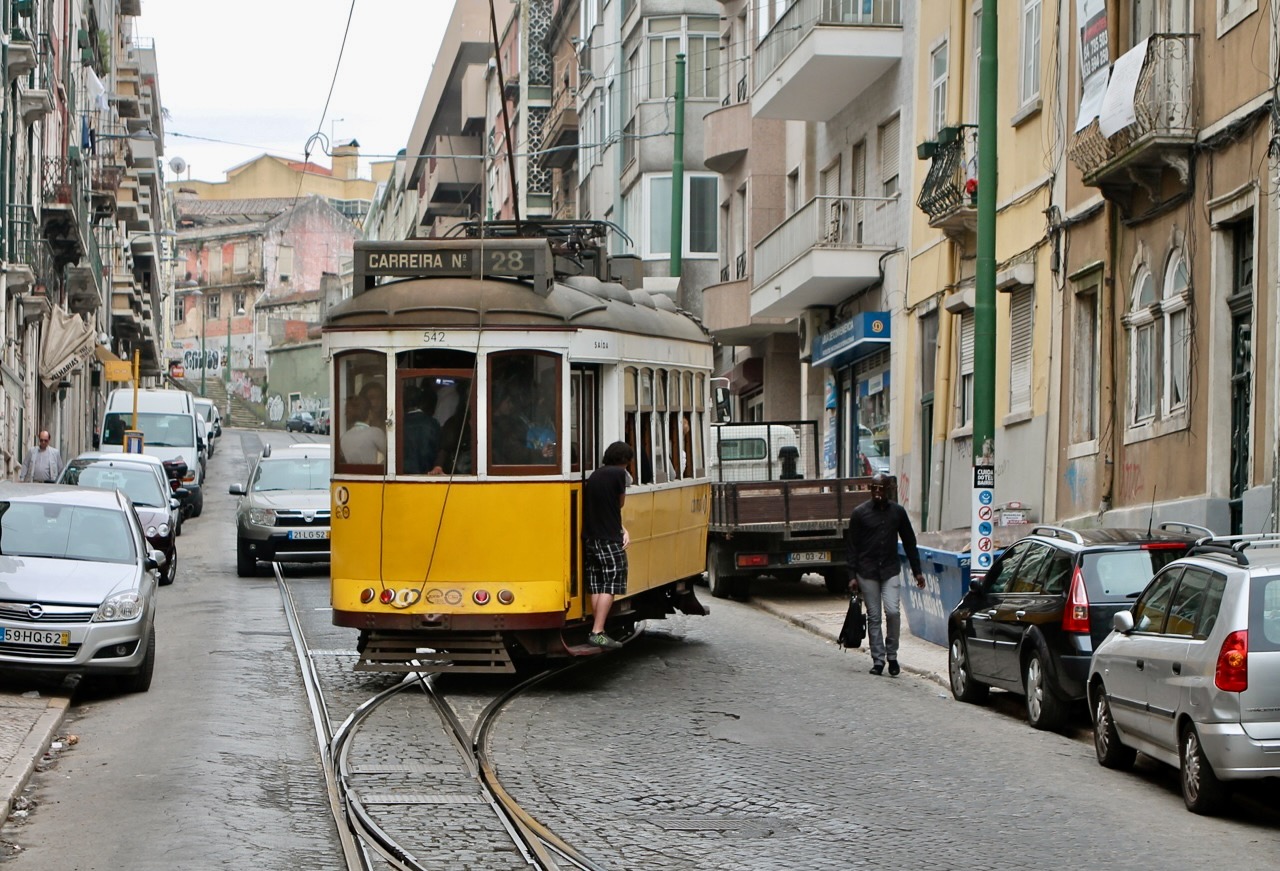Question:
I know that Portugal shifted from driving left to right in 1928. I could imagine, that the trams had only left doors when shifting. How did Portugal cope with this? Did the trams continue in the left side for some time, or was it properly planned as in Sweden, where public transportation introduced double sided door vehicles starting 10 years before cut over i 1967.
Answer:
In 1928 all trams in Portugal were fully symmetrical: double-end with entrances / exits at both sides. So for the trams there wasn’t anything to change. The first unidirectional trams in Porto were put in service in 1946, the first in Lisboa in 1951. Sintra, Coimbra and Braga never had single-end trams with entrances at one side only.
With regard to the infrastructure there wasn’t much to do either. Tram-stops were most very simple affairs: just a pole with a plate or a plate attached to a support wire of the overhead. Dedicated platforms hardly existed (if at all). People boarded from the street itself.
There were a few changes with the track layouts that had to be made. Not in Braga or Sintra, which were always complete single track with passing loops. The change from left to right was on 1 June 1928. Coimbra had only since December 1928 one stretch with double track with all the connecting single track routes also used in both directions, so no changes were to be made in Coimbra either.
In Porto some changes had to be made. The route between Carmo and Carvalhosa went inbound via Rua de Cedofeita and outbound via Rua do Rosário. This was already since 1875 when the trams were hauled by mules. It didn’t change in 1928. That meant that changes to the track layout had to be made in Rua da Boavista (Carvalhosa), at Carmo / Praça Carlos Alberto and in front of the Hospital de Sto.António. Also at Infante the layout was altered because of the shunting with the trailers that had to be done there. The original quite complicated layout at Infante was simplified here as part of the change.
Perhaps in Lisboa similar changes had to be made, but I lack knowledge about the details of the track layouts and changes with the direction of the traffic flows there.
Gradually over time the intermediate cross-overs were changed. It’s preferred that the trams go over them with the points trailing because facing points give a small risk that the tram accidentally goes into the wrong track. But this wasn’t an essential for the change in the rule of the way.
If “Dagen H” (3 September 1967) had been a few decades earlier, the situation in Sweden would have been much easier. Like almost everywhere double-end trams with entrances at both sides were common and single-end trams with entrances at one side only the exception. Acquiring of single-end trams by the Swedish tram systems started in the 1940’s.


Leave a Reply